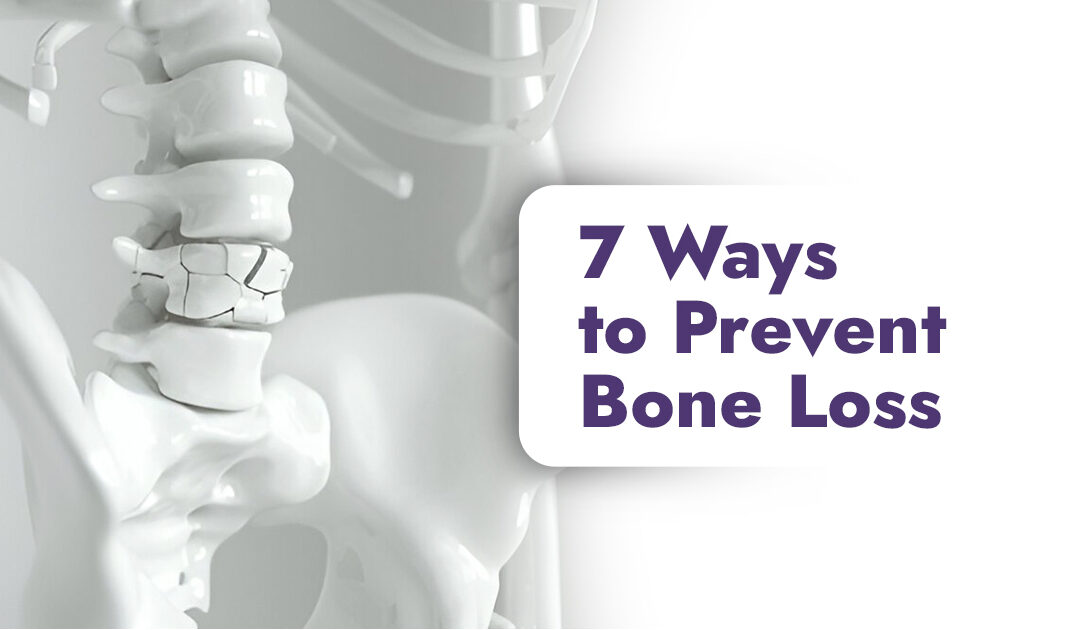Your bones are always changing; they are breaking down and growing new bones. Your bone mass increases and new bone is created by your body more quickly than existing bone is broken down when you’re young. Around age 30, most people reach their peak bone mass. After that, your bone mass continues to remodel, but at a slightly slower rate. Your risk of developing osteoporosis, a disorder that weakens and fractures bones, is determined by the amount of bone mass you have by the time you turn 30 and the rate at which you lose it thereafter.
What Affects Bone Loss?
Women have osteoporosis at a higher rate than men. The Centers for Disease Control and Prevention (CDC) report that, however, over half of all persons over 50 either currently have osteoporosis or are at higher risk of developing it.
Growing older is the main risk factor for osteoporosis. However, there are a few other factors that could raise your risk even more. Among them are:
- Postmenopausal women are most vulnerable when it comes to sex
- Body size: those with petite frames
- Ethnicity: Asian and White women are most at danger.
- Family background: if the parent’s osteoporosis hormones are high: low estrogen or testosterone diet, inadequate protein intake, extreme dieting, and vitamin D and calcium deficiencies
- A few medical problems, including HIV, rheumatoid arthritis, cancer, anorexia, endocrine and hormonal disorders, and disorders that impact nutritional absorption
- Certain drugs: prolonged use of pharmaceuticals, such as antidepressants, cancer treatments, and more
- Additional lifestyle variables such as alcohol misuse, sedentary behavior, and smoking
Osteoporosis can be avoided by taking precautions to restrict or minimize these risks. You can avoid osteoporosis and preserve bone strength by using the following advice.
1. Get Enough Calcium
It is essential to consume adequate calcium in order to prevent osteoporosis. You store calcium in your bones. Your body will extract calcium from your bones (Trusted Source) if you don’t get enough of it, weakening them in the process. In the event that your regular diet isn’t providing enough calcium, you might want to consider taking a supplement. People who are vegan or lactose intolerant, or whose bodies have trouble absorbing nutrition, such as those who have had bariatric surgery, may find this to be especially difficult. Consult a physician to determine if taking calcium supplements is appropriate for you.
2. Exercise Regularly
At every stage of life, exercise affects bone mass and strength. The best prevention against osteoporosis is to engage in high- and low-impact weight-bearing and muscle-strengthening exercises, according to a 2021 study. These include jogging, dancing, hiking, fast-walking, weightlifting, muscle strengthening, and more.
3. Add Lean Proteins to Diet
As long as you receive enough calcium, consuming more protein is linked to improved bone density, a slower rate of bone loss, and a lower risk of hip fracture, according to the International Osteoporosis Foundation. Inadequate protein intake in older persons increases the risk of frailty, falls, and muscle weakness. Try to consume a lot of lean proteins for the best possible bone health. Your options include lean beef, poultry, fish, legumes, soy products, eggs, grains, nuts, and seeds.
4. Remember Your Dose of Vitamin D
Vitamin D is absorbed by the body through diet and sun exposure. Since vitamin D is found in very few foods, sunlight provides the body with 70–80% of the necessary amount. How much vitamin D you absorb might vary depending on several factors, including where you live, how much time you spend inside, and the season. Vitamin D dietary sources include milk, cereal, yogurt, fatty fish, egg yolks, cheese, orange juice, mushrooms, and more.
5. Limit Alcohol Consumption
Your body’s calcium balance is impacted by alcohol, which affects the health of your bones. Additionally, drinking alcohol can hinder your body’s production of vitamin D when exposed to sunlight. Hormone deficits brought on by heavy drinking may raise your risk of osteoporosis. Additionally, drinking increases the chance of fractures and falls. The CDC advises against drinking alcohol altogether or limiting it to one drink for women and two drinks for men per day.
6. Maintain Healthy Weight
Osteoporosis is more common in those who are obese or overweight. Your risk of osteoporosis is correlated with your body mass index (BMI), which is determined by taking your height and weight into account. According to a 2020 study with 4,982 postmenopausal women and 3,774 men over 50, the optimal BMI range to lower the risk of osteoporosis is 23.0 to 24.9 kg/m. Overweight is defined as having a BMI of 25 or higher.
7. Quit Smoking
One of the risk factors for osteoporosis is smoking. Research has demonstrated a clear link between smoking and decreased bone density. Individuals who smoke also frequently have poor diets, alcohol consumption, and insufficient physical activity as additional risk factors for osteoporosis. Smokers may also go through menopause earlier, which has an impact on bone density. Additionally, smoking may raise your risk of fractures. Furthermore, it has been demonstrated to have a deleterious impact on fracture healing.
The condition known as osteoporosis makes bones brittle and weak. Bones become more brittle and fracture-prone as they lose density. Age is a major contributing factor to osteoporosis, but nutrition and lifestyle choices also matter. Eat a diet high in calcium and vitamin D, exercise with weights, drink alcohol in moderation and abstain from smoking to maintain healthy bones.
